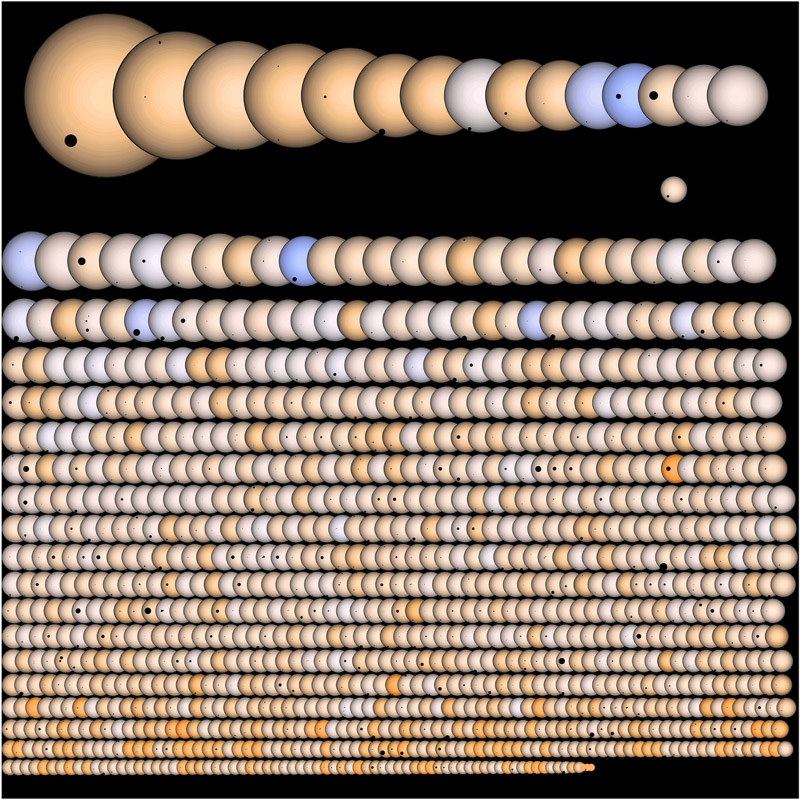
|
Credit & Copyright: Jason Rowe,
Kepler Mission
Explanation:
Using the prolific
planet hunting
Kepler spacecraft, astronomers have
discovered
1,235 candidate planets orbiting other suns since the
Kepler mission's search for Earth-like worlds
began in 2009.
To find them, Kepler monitors
a rich star field to
identify planetary transits by the slight dimming of starlight
caused by a planet crossing the face of its parent star.
In this remarkable illustration,
all of Kepler's planet candidates
are shown in transit with their parent stars ordered by size from
top left to bottom right.
Stars and the silhouettes of transiting planets are all shown
at the same relative scale, with saturated
star colors.
Of course, some stars show
more than one planet in transit, but
you may have to
examine the picture at high resolution to spot
them all.
For reference, the Sun is shown at the same scale, by itself below
the top row on the right.
In silhouette against the Sun's disk, both Jupiter and Earth
are in transit.
|
January February March April May June July August September October November December |
| ||||||||||||||||||||||||||||||||||||||||||||||||
NASA Web Site Statements, Warnings, and Disclaimers
NASA Official: Jay Norris. Specific rights apply.
A service of: LHEA at NASA / GSFC
& Michigan Tech. U.
Based on Astronomy Picture
Of the Day
Publications with keywords: extrasolar planet - kepler - transit
Publications with words: extrasolar planet - kepler - transit
See also:
